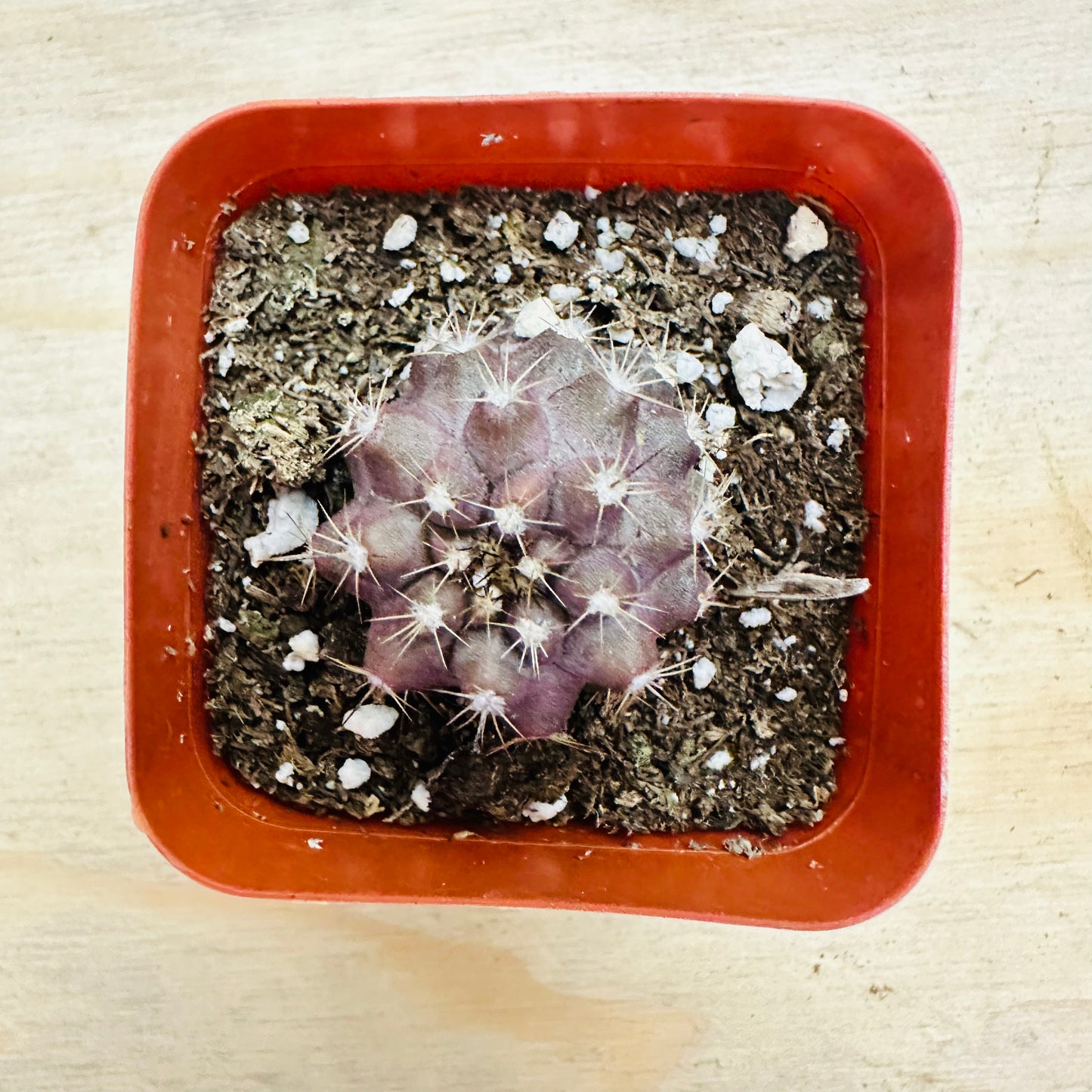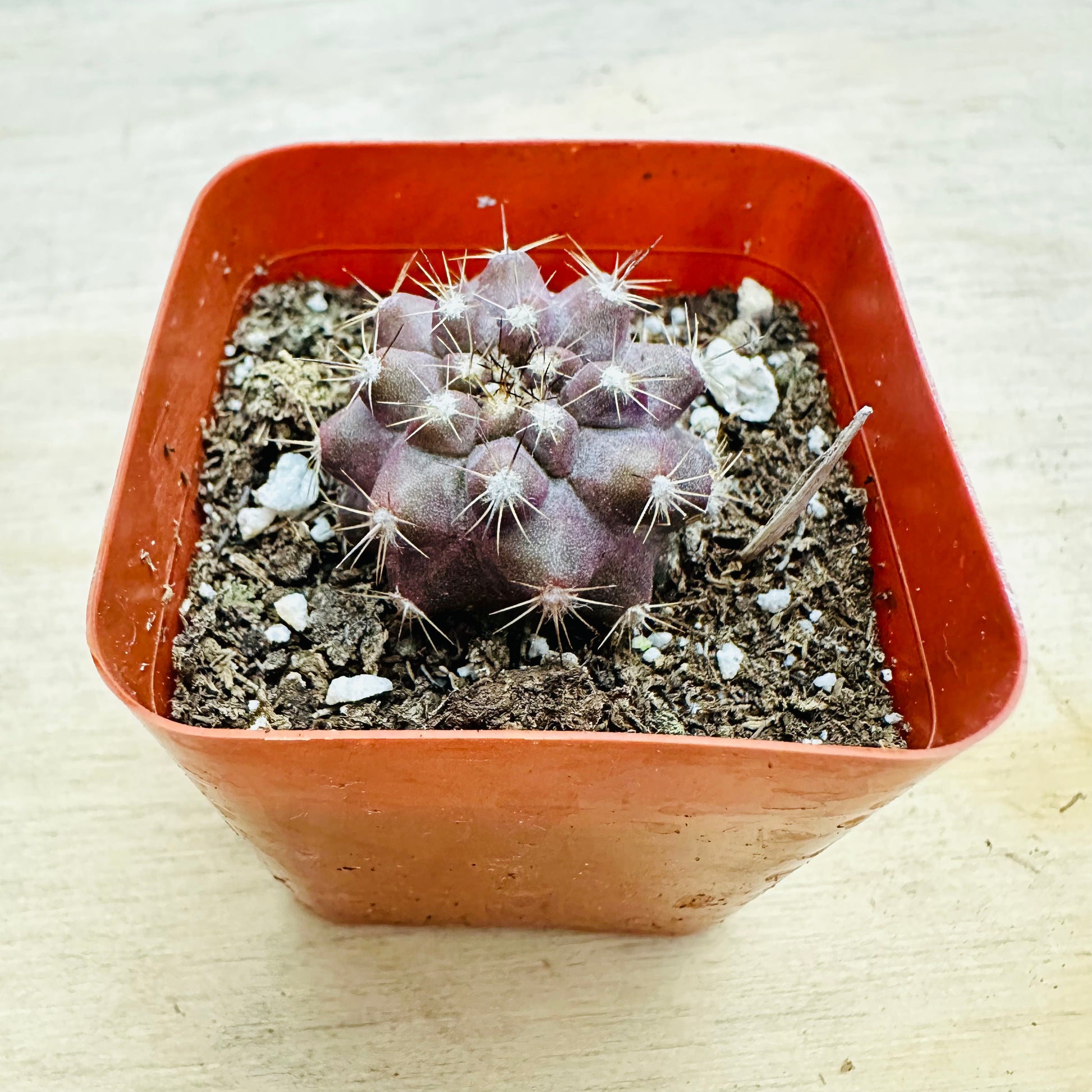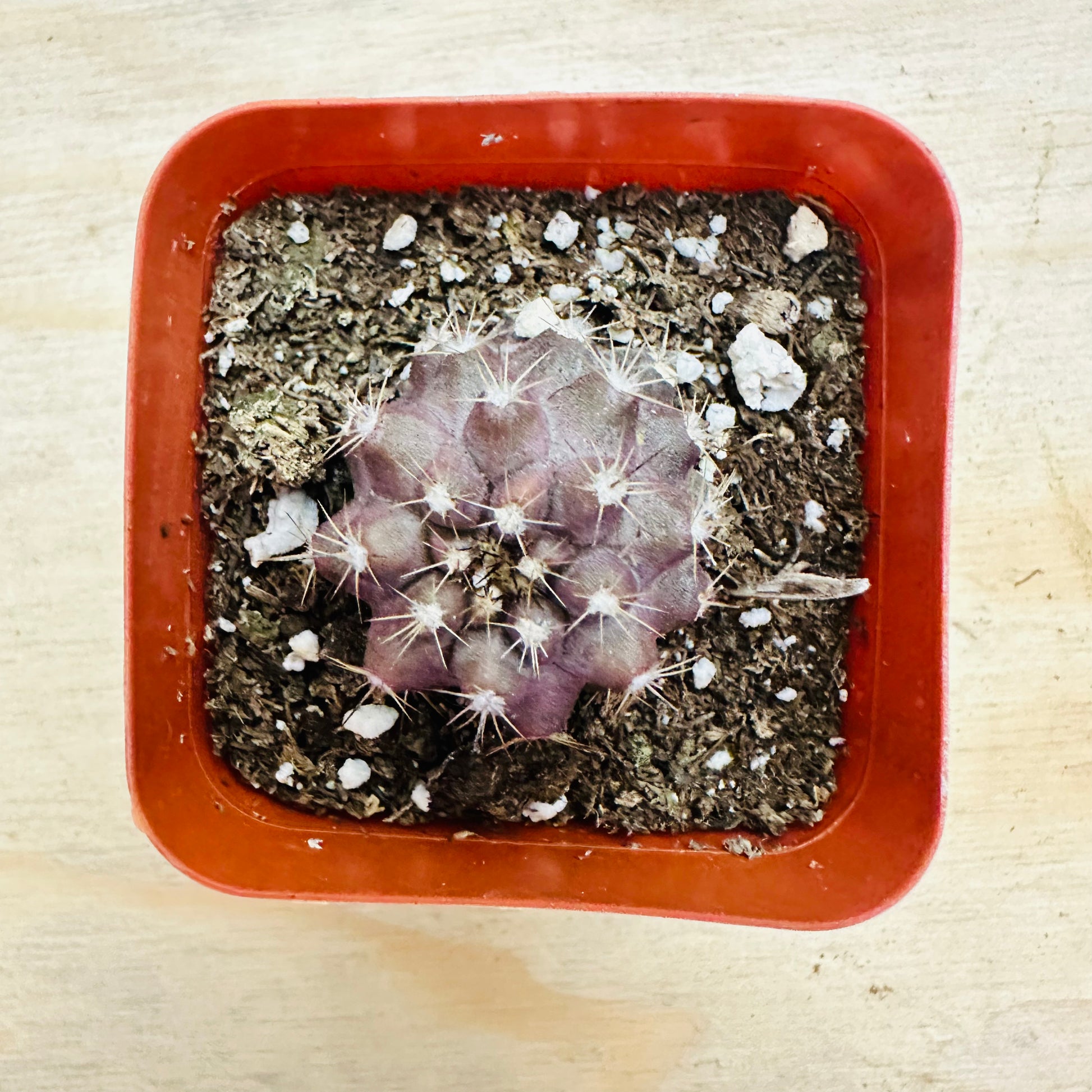Copiapoa esmeraldana
Copiapoa esmeraldana
In stock
Couldn't load pickup availability
📝 Description
**Morphological Characteristics**
Copiapoa esmeraldana is a rare and highly sought-after cactus species native to the coastal deserts of northern Chile, particularly near Esmeralda in the Atacama Desert. Belonging to the Cactaceae family, it is admired for its compact form, striking color, and rugged beauty.
The plant forms small, globular to slightly cylindrical stems, typically reaching 5-12 cm (2-5 inches) in height and about 4-8 cm (1.5-3 inches) in diameter. The stems are often a deep bluish-green to grayish-green, sometimes covered with a thin, whitish bloom (farina) that helps reflect intense sunlight. It has well-defined ribs lined with closely spaced areoles. Each areole produces short, stout spines that are initially dark brown or black, aging to gray. In the summer, mature plants may produce small, lemon-yellow flowers that emerge from the woolly center of the stem.
**Growth Habits**
Copiapoa esmeraldana is a slow-growing cactus that generally remains solitary but may occasionally produce small offsets. It thrives in harsh, dry environments and has adapted to survive with minimal water and extreme sunlight. Its slow growth and compact size make it a favorite among collectors and those specializing in rare or miniature cacti.
**Maintenance Points**
• Lighting: Requires full sun to maintain its compact shape and rich coloration. Outdoors, place it in a bright, sunny location. Indoors, a south-facing window or strong supplemental lighting is essential.
• Watering: Water very sparingly. During the growing season (spring and early summer), water thoroughly but only when the soil is completely dry. In winter, watering should be minimal to none, mimicking its natural dormant period.
• Soil: Needs a highly porous, fast-draining cactus mix. Incorporate a large amount of pumice, coarse sand, or grit to mimic its native desert conditions.
• Temperature: Prefers temperatures between 18-27°C (65-80°F). It can tolerate brief, light frosts down to about -2°C (28°F) if kept dry. Protection from prolonged cold is recommended.
• Fertilization: Apply a very diluted, low-nitrogen cactus fertilizer once or twice during the growing season. Excessive feeding can cause unnatural, etiolated growth.
• Potting: Use shallow pots with excellent drainage. Repot only when necessary, as this cactus prefers being somewhat root-bound.
• Humidity: Prefers very dry conditions. High humidity levels can encourage rot and fungal problems.
**Reproduction Method**
Copiapoa esmeraldana can be propagated by seeds and, less commonly, by offsets.
1. **Seeds:**
• Sowing: Sow seeds on the surface of a fine, well-draining, sterile cactus seed mix.
• Germination: Keep lightly moist and maintain temperatures between 20-25°C (68-77°F). Germination can take several weeks to months.
• Aftercare: Once seedlings are large enough, transplant them into individual pots.
2. **Offsets:**
• Selection: Carefully separate small offsets if they appear, using sterile tools.
• Callusing: Allow the offsets to dry and callus for several days.
• Planting: Insert into a dry, well-draining mix and water very lightly until established.
**Additional Tips**
• Growth Rate: Expect very slow growth; patience is essential when cultivating this species.
• Pest Control: Watch for common pests such as mealybugs and spider mites. Treat early with insecticidal soap or neem oil.
• Disease Prevention: Excellent drainage and careful watering are critical to prevent rot, which is a common issue.
• Display: Best showcased in shallow pots or rock gardens where its unique form and color can be appreciated.
With its rare beauty, rugged charm, and minimal care needs, Copiapoa esmeraldana is a prized specimen for serious cactus collectors, adding a true desert gem to any curated succulent or cactus collection.
🌿 Care Tips
Plant Care
Light
Water
Soil
Temperature
🌟 Note: It’s normal for succulents to appear slightly shriveled after shipping. They usually recover within a few days in a suitable environment.
📦 Shipping Info
Seah Shipping Policy
Effective Date: November 2025
This Shipping Policy applies to orders delivered within the continental United States (the lower 48 states). By purchasing from Seah, you agree to the terms below.
1) Shipping Cost & Free Shipping
- Automatic rate calculation: Shipping is calculated at checkout based on weight, destination ZIP and carrier rates.
- Free Standard Shipping: Orders $59+ (pre-tax, after discounts) ship free to the lower 48 states.
- Alaska, Hawaii, Puerto Rico & other territories: Not eligible for free shipping or standard flat offers at this time.
- Taxes/Duties: Applicable sales tax and any fees are shown at checkout.
2) Processing Schedule
- Business days only: We process and ship Monday–Friday. No shipping on weekends or U.S. federal holidays.
- Handling time: 1–3 business days after payment confirmation.
- Cut-off time: Orders placed before 3:00 PM (PST) are prioritized for same-day processing; others roll to the next business day.
- Changes/Cancellations: Email support@seah.co within 12 hours of purchase; after that, the order may already be in processing.
3) Transit Times
| Method | Estimated Transit | Total ETA (Handling + Transit) |
|---|---|---|
| Standard | 5–8 business days | 6–11 business days |
| Express | 3–4 business days | 4–7 business days |
ETAs are estimates. Weather, holidays, carrier delays or high-volume periods may extend delivery times.
4) Seasonal Temperature & Plant Safety
- Winter (Nov–Mar): We strongly recommend adding a heat pack at checkout to protect plants from freezing. Orders shipped without a heat pack during cold conditions are not covered for cold damage.
- Summer heat: During extreme heat waves, we may hold shipments until temperatures normalize. We’ll notify you if there’s a hold.
- Packaging: Plants are carefully packed (bare-root or potted by type/size) to minimize transit stress.
5) Carriers & Tracking
- We ship via USPS / UPS / FedEx, selected automatically for best service to your address.
- When your order ships, you’ll receive a tracking email. Tracking typically activates within 24 hours.
- If you haven’t received tracking within 3 business days, contact us at support@seah.co or +1 (626)-999-1314.
6) Address Changes & Delivery Issues
- Before shipment: Request address changes within 12 hours of ordering.
- After shipment: We can’t modify the address once dispatched. Please contact the carrier for redirection options.
- PO Boxes: Supported for USPS only; UPS/FedEx require a street address.
- Seah isn’t responsible for delays or loss due to incorrect addresses provided at checkout.
7) Service Area
We currently ship to the continental U.S. (lower 48 states). Orders to AK/HI/PR and other territories are not eligible for free shipping and may be restricted.
8) Support
- Hours: Mon–Fri, 9:00 AM – 5:00 PM (PST)
- Phone: +1 (626)-999-1314
- Email: support@seah.co
- Address: 7870 Margaux Pl, Rancho Cucamonga, CA 91739, United States
Thank you for supporting our California nursery—each plant is hand-selected and packed with care. 🌱




